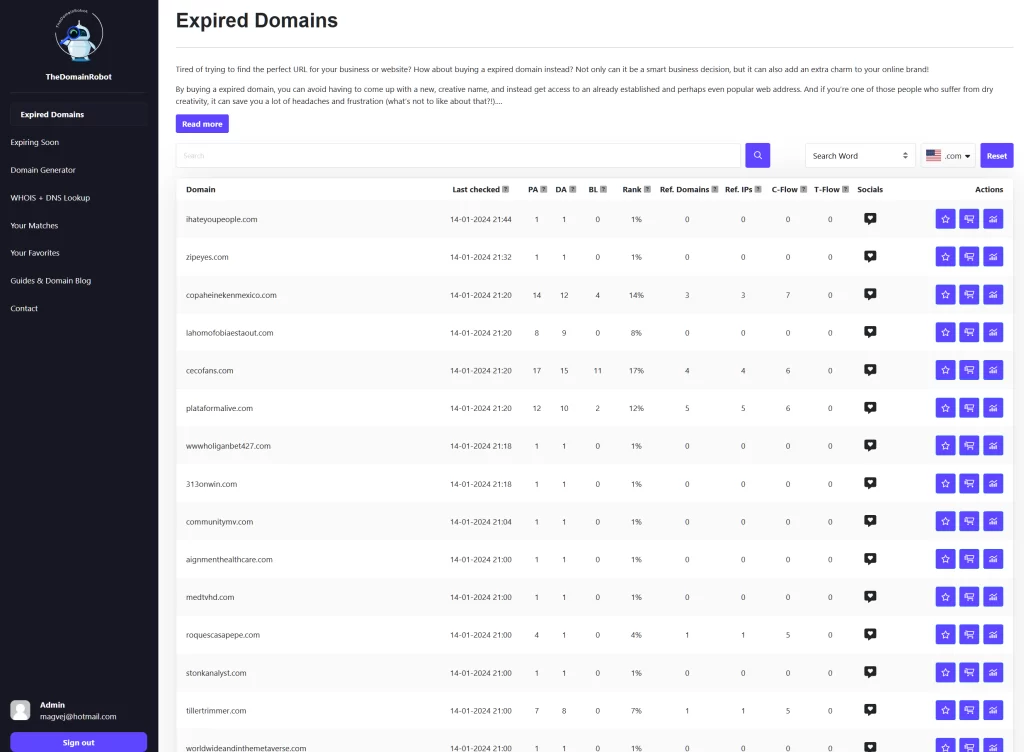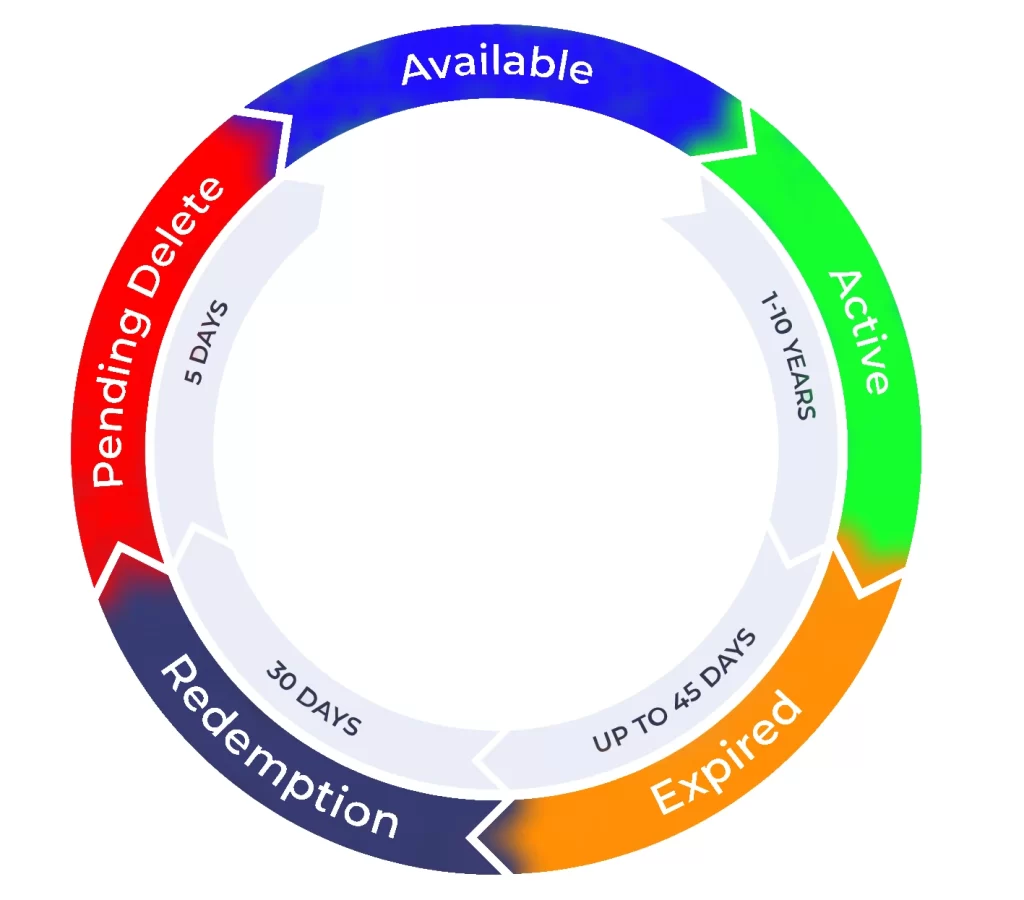Do Expired Domains still Work? Everything you need to know
14-01-2024 - BlogsDo Expired Domains still Work?
“Do Expired Domains still Work?” is a question that many in the digital marketing sphere find themselves asking. And the short answer is no – when a domain expires it becomes inactive immediately and all the services attached to it cease to function. This also means that, you will no longer be able to make any updates to the domain or the DNS records for that domain.
But! they can expired domains can still be valuable resources, especially if they have a strong backlinks and prior traffic. Because these attributes can greatly help a new website build on an expired domain, with a solid base foundation – that otherwise might have taken many years to build from scratch
However, not all expired domains are created equal. So it’s critical to research any expired domain you are thinking of buying, for any potential red flags that could harm your upcoming website.
Understanding Expired Domains
Simply put, an expired domain is one that the previous owner has not renewed before the expiration date set by the domain registrar. This can happen for a multitude of reasons – from oversight or a decision to abandon a project, to financial constraints or strategic changes in direction.
Once a domain expires, it goes through a specific lifecycle wherein it becomes available to the public again after a designated redemption period. During this time, the original owners still have a chance to reclaim it, typically at a higher cost. If they do not, the domain is released and becomes available for new registration.
Expired domains often come with preexisting online advantages, notably a history of traffic and backlinks, which can potentially benefit the new owner. In the context of SEO and digital marketing, this historical value can make expired domains a great asset.

The Relevance of Expired Domains Today
In today’s fast-paced digital environment, the relevance of expired domains remains significant. Search engines like Google place considerable weight on a site’s authority, which can be influenced by an expired domain’s pre-existing backlinks. These links, if from reputable sources, serve as votes of confidence, signaling to search engines that the content has been valued by others.
Moreover, in niches where competition for search engine rankings is fierce, starting with an expired domain can provide a strategic advantage. Rather than beginning from ground zero with a brand-new domain, you’re stepping in with a domain that search engines already recognize. This can translate into quicker indexing and the possibility of a faster climb up the rankings.
However, the landscape of online marketing is ever-evolving. Search engine algorithms have become more sophisticated, now emphasizing quality and relevance in addition to authority. This means expired domains can still work, although not by virtue of their age alone. They require a strategic approach where emphasis is placed on aligning with current SEO best practices and producing high-quality, original content.
How and When Domains Expire
Understanding the expiry process of domain names is essential for anyone looking to utilize expired domains. A domain typically expires when the owner does not renew it by the end of its registration period. This period can vary but usually lasts anywhere from one to ten years, depending on the owner’s initial choice at the time of purchase.
When a domain expires, it doesn’t immediately become available for others to register. It enters a grace period, where the original owner can still renew it, usually within 30 to 45 days, without any additional fees. If the owner still doesn’t renew during this phase, it progresses into the redemption period. This stage lasts about 30 days and involves higher fees to reclaim the domain.
Should the domain remain unclaimed post-redemption period, it enters a final phase known as the “pending delete” period, which lasts around five days. After this, the domain is released back to the public for registration.
The Life Cycle of a Domain Name
Understanding a domains life cycle is critical for anyone wondering, “Do Expired Domains still Work?” Timing is everything. Knowing when a domain moves from active to expired, through redemption, and finally to deletion enables you to strategically secure domains with built-in SEO advantages. Appreciating the life cycle allows for informed decisions about when to act to secure a domain that can bolster your online presence. This insight helps you to harness the full potential of expired domains, enhancing your web strategies with precision and purpose.

The Available Period
During this phase, the domain name is up for grabs and can be registered through any domain registrar that supports its top-level domain (TLD).
The Active Period
Following successful registration, the domain’s status shifts to Active. It is now fully functional as a website address, granting the new owner complete control to make configuration adjustments and DNS updates.
The Expired Period
If a domain isn’t renewed by its expiration date, it enters the Expired phase. Around 45 days after expiration, it is programmed for deletion if not renewed. Visitors can typically tell if a domain is expired by a parking page indicating its expired status. Until it’s renewed, it also can’t be transferred to a different registrar.
The Redemption Period
At the end of its Expired phase, a domain heads into the redemption period, lasting about 30 days for most common TLDs like .com and .org. During this stage, your website, email, and linked services cease to operate, and the domain details are slotted for elimination from the domain registry.
The Pending Delete Period
Failing to renew the domain after the redemption period propels it into the pending delete stage. Alteration or retrieval of the domain is now out of reach. This phase is a short, five-day interval that ends with the domain’s removal, making it reachable once more for anyone to register. Specifically, .CA domains become ripe for new registration on the following Wednesday post-redemption.
When a domain reemerges on the market, retaking ownership can pose challenges. It may become the subject of an auction, be placed on backorder, or swiftly snapped up by a new entity, often driving up the cost to reacquire it significantly.
